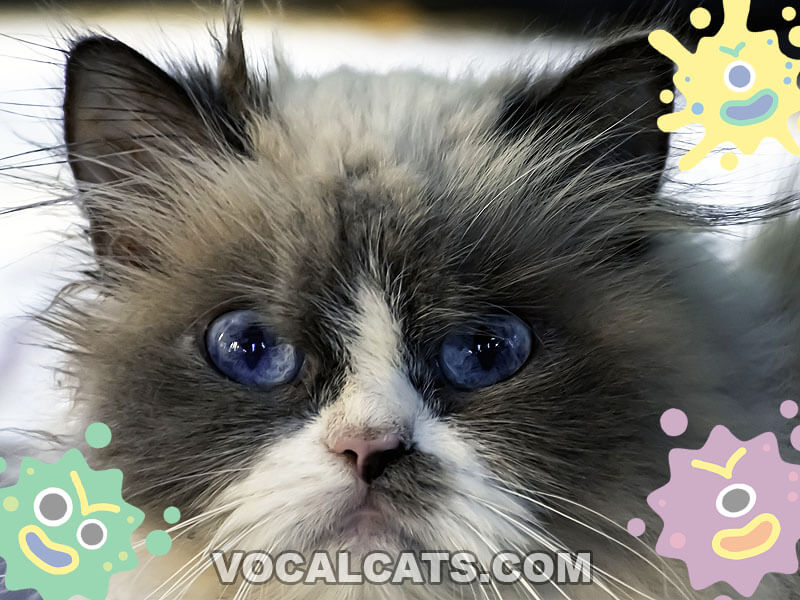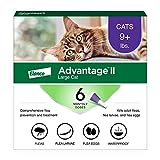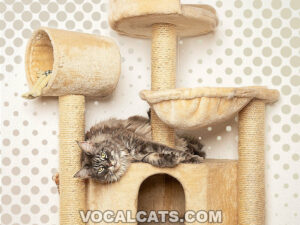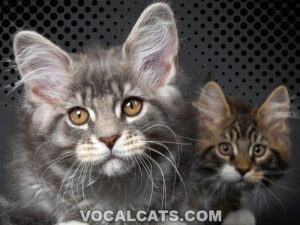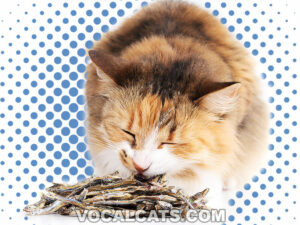Do Ragdoll Cats Sneeze A Lot? Yes, Ragdoll Cats do sneeze a lot and for various reasons. Frequent sneezing or Ragdoll Cats sneezing a lot isn’t usually a cause for concern. It is a common occurrence. However, it shouldn’t persist for an extended period of time. If you noticed your Ragdoll Cats having continued episodes of sneezing, it is best to consult with your veterinarian as it may indicate a serious health issue.
Ragdolls are a unique breed that requires utmost love, affection, and attention. They are adorable, with round, bubbly eyes that makes it hard to ignore them. Many may compare the personality of a Ragdoll to that of a dog because they are just as loving, compassionate, and loyal towards their owners.
One thing that separates them from other breed is their calm and composed nature. They may be big compared to other cats but they sure love to cuddle. But there’s also a downside to being a Ragdoll owner. Some Ragdoll Cats do sneeze a lot. Any changes in their environment can trigger allergies symptoms in Ragdolls.
RECOMMENDED: Are Ragdoll Cats Hypoallergenic?
Contents
Are Ragdolls prone to Sneezing?
Yes, Ragdolls can be prone to sneezing. When Ragdoll cats sneeze, they may look cute beyond imagination. But Ragdolls are sensitive cats that require care and attention like no other.
When they are introduced to a new environment (like from a cat shelter to their new home), the change in the surroundings can cause sneezing. However, sneezing should not continue for more than 2 to 3 days.
Additionally, your Ragdoll kittens may be sneezing as a way for their growing bodies to adjust to their new environment and home.
It’s also important to note that Ragdolls are susceptible to various bacterial, viral, and fungal infections. The upper and lower respiratory system is targeted directly by these microorganisms.
Also, allergies can play a huge role as we’ll discuss in further details below.
If your Ragdoll Cat has recently been in contact with other cats, it’s a good idea to see the vet and get her checked for Feline Herpes Virus (FHV). Some breeds, particularly Ragdoll Cats, are highly susceptible to it.
You’ll want to inspect their eyes and nose closely on a regular basis. When checking their eyes and nose, look for any discharge or changes in color. Ensure that there are no foreign objects stuck inside their nose as this can lead to frequent sneezing.
Many often overlook and ignore their Ragdoll cat’s frequent sneezing episodes. Any unwanted fluid from the nose should be inspected immediately.
A vet visit is essential to minimize the risk of a serious health condition. Always keep a close eye on your cat’s health and monitor his or her behavior closely. Don’t miss regular checkups.
Why is my Ragdoll Cat Sneezing?
A Ragdoll is fluffy, loving, and fun to watch. However, all of these traits seem quite blurred when they keep sneezing.
Although Ragdolls may to susceptible to multiple health problems, the cause of their constant sneezing episode may not be health related.
Their constant sneezing may be triggered by the household products we’re using or their dirty litter box or simply something stuck in their nose.
DON’T MISS: Cat Scratching Litter Box Excessively: 10 Reasons Why & What To Do!
Next, we will go over 15 reasons why Ragdoll Cats sneeze a lot.
15 Reasons Ragdoll Cats Sneeze A Lot
- Rabies.
- Feline upper respiratory infections (URIs): Common cold or cat flu.
- Nose and sinus inflammation.
- Allergies.
- Feline Herpes Virus (FHV).
- Feline Calicivirus Infection.
- Vaccinations.
- Dental problems.
- Foreign objects in the Ragdoll’s nose.
- Fungal Infection.
- Volatile compounds (VOCs) in Paint.
- Ingredients in air fresheners.
- Ingredients in cleaning products.
- Toxic ingredients in laundry products.
- Dirty litter box.
Let’s go over how these reasons can cause your Ragdoll Cats to sneeze a lot.
1. Rabies can cause Ragdoll Cats to Sneeze A Lot
There are many reasons why Ragdoll Cats sneeze a lot and rabies is one of the main reasons a Ragdoll Cat sneezes.
Did you recently let your Ragdoll Cat head outside and when she came back, she had a few scratches on her body or face? It is very likely that she got involved in a fight with a wild animal. This is how rabies is transferred in animals.
If you notice scratches on your Ragdoll’s face, body, or legs, we highly recommend that you bring her to see a veterinarian as soon as possible.
Your vet will perform a series of tests to properly diagnose whether your Ragdoll Cat has rabies. This is why it’s important to have regular check-ups.
2. Common cold or cat flu can lead to excessive Sneezing in Ragdolls
Ragdolls have a high susceptibility to viral colds so make sure to keep a close eye on them throughout the year and especially during the fall or winter seasons.
Also known as Feline upper respiratory infections (URIs), Ragdolls with the cat cold, cat flu, or the common cold may start to sneeze profusely. It’s important to note that URIs can come in three (3) forms that can last between 7 and 21 days.
- Bacterial.
- Viral.
- Fungal (less common).
Some of the signs and symptoms of upper respiratory infections (URIs) or the common cold include the following:
- Excessively sneezing over several hours or several days.
- Watery red eyes.
- Runny nose.
- Discharge from the eyes or nose can appear bloody, clear, green, or yellow.
- Fever.
- Snorting as a way to clear the congestion.
- Repeated swallowing.
- Constant coughing.
- Breathing through the mouth instead of the nose.
- Lethargy.
- Behavioral changes.
- Loss in appetite.
- Dehydration.
One may wonder how did my Ragdoll Cat catch a cold?
If your precious Ragdoll Cat is allowed to go outdoors during the day, it’s possible that he may have caught a cold from airborne particles. Outdoors cats are more likely to be in contact with other sick cats and animals so they are more prone to catching a cold.
Keep in mind that these bacterial and viral cat colds can easily be passed between felines through the droplets that were spread by sneezing.
If you suspect that the frequent sneezing in your Ragdoll Cat is due to him having an upper respiratory infection, we highly recommend that you contact your vet right away. Your veterinarian will most likely ask you to bring your Ragdoll in for a physical checkup and a thorough examination.
Do not delay and second guess. It’s best to get your feline friends to the vet for a checkup. If your fuzzy friends have upper respiratory disease and it’s not treated right away, it can lead to pneumonia in some cases.
After the examination and if it is confirmed that your Ragdoll has the common cold, the vet may recommend that you get a vaporizer or a humidifier to increase the humidity in your home to help alleviate the sneezing.
Some additional treatments your veterinarian may suggest include:
- Antibiotics.
- Antiviral medications.
- Nose drops.
- Eye drops.
- Subcutaneous fluids (if your Ragdoll is dehydrated).
- Steroids.
- Providing plenty of fresh cool water.
The vet may also suggest using a damp cotton ball or damp cloth to clean your Ragdoll’s stuffy nose.
If your vet notices that your Ragdoll Cat has watery eyes or discharge from the eyes, he may recommend that you apply a saline solution on a cotton pad and gently clean your cat’s watery red eyes with it.
Sometimes, simply feeding your feline friends warm canned food can help to give them plenty of energy and strength to fight the cold.
If the common cold is viral, the vet may recommend vaccination so your Ragdoll is immune to the virus in the future. Remember, prevention is always better than cure.
READ ALSO: Do Ragdoll Cats Scratch Furniture?
3. Nose and sinus inflammation can cause Ragdoll Cats to Sneeze A Lot
There are two medical conditions that can cause excessive sneezing in Ragdolls: Feline Rhinitis and Sinusitis in cats.
Sinusitis and rhinitis usually happens at the same time, so what’s the difference between the two?
When the mucous membranes (lining of the nose) of the Ragdoll Cat’s nose is inflamed, it is known as rhinitis.
When the Ragdoll Cat’s nasal passages are inflamed, it is known as sinusitis.
If these two medical conditions aren’t treated in a timely manner, then your feline companion may experience a bacterial infection.
Now that we know what rhinitis and sinusitis are, how do our Ragdoll Cats get them?
Here is a list of factors that can cause feline rhinitis and sinusitis:
- Viral infections (feline calicivirus or feline herpesvirus) both of which are the common cause of rhinitis.
- Bacterial infections.
- Fungal infections.
- Abnormal tissue growth in the nasal passages (Neoplasia).
- Inflammatory polyps (growth inside the feline’s nasal passages that are non-cancerous).
- Cleft palate and other congenital abnormalities.
- Foreign objects inside the nose.
- Fungal disease.
- Parasites.
- Dental disease or infection (tooth root abscess).
- Tumor in the nose or other abnormal tissue growth (Nasal polyps).
- Allergies.
It’s important to point out that kittens, including Ragdoll kittens are especially prone to viral rhinitis. Kittens may be infected by being exposed to objects around the house that have been contaminated with infectious secretions. Objects around the house may include:
- Toys.
- Cat beds.
- Water and food bowl.
- Litter boxes.
In other cases, they may be in close contact with another kitten or cat that had rhinitis and sinusitis.
Ragdoll cats with sinusitis and rhinitis may experience the following signs and symptoms:
- Excessive sneezing.
- Reverse sneezing.
- Open mouth breathing.
- Breathing difficulty.
- Frequent pawing at the face.
- Stuffy nose (one or both nasal passages may have lowered air flow).
- Loss of appetite.
- Changes in the color of nasal discharge.
If you suspect your Ragdoll Cats have nose and sinus inflammation, we highly recommend that you reach out to your veterinarian as soon as possible. It’s best to never ignore the symptoms since this condition requires immediate medical treatment.
Your vet will be able to properly diagnose the issue, administer the right treatment options, and can even guide you on how to better take care of your feline companion once you bring him or her back home.
Some of the medical treatments your vet may suggest include:
- IV fluids to keep your cat hydrated.
- Nutritional support to give your feline’s body the strength to fight off the infection and and recover nicely and quickly.
- Antibiotics for bacterial infections (helps fight the infection and prevent current symptoms from getting worse.
- Antifungal medications.
- Nasal flush.
4. Allergies can trigger frequent Sneezing in Ragdoll Cats
In addition to nose and sinus inflammation, allergies can also cause Ragdoll Cats to sneeze a lot. No one rule fits all when it comes to allergens.
Allergens like fleas, food, mold, pollen, dust, smoke (candle and cigarette), various cleaning agents and chemicals, and aerosols can all cause sneezing, watery eyes, and runny nose.
That’s because your Ragdoll cat’s immune system is recognizing these allergens as a threat.
It’s important to observe your Ragdoll Cat closely and identify the cause of your Ragdoll’s sneezing.
Suppose your Ragdoll kitten suddenly vomits and have diarrhea right after eating. This could mean that your feline family member is allergic to a particular food he just ate.
Likewise, if you see your Ragdoll kitties itching and scratching continuously, they may have cat fleas or it may be due to a flea allergy.
WANT MORE INFORMATION? Check out What Do Cat Fleas Look Like To The Human Eye? With Pictures!
Again, it’s best to consult with your vet and ask if immunotherapy for cats allergies is available or products like asthma medication, nasal steroids, or antihistamines are available.
Allergy desensitization or allergen immunotherapy is the process of reducing the intensity of the allergen until it is completely diminished.
5. Feline Herpes Virus (FHV) can cause Ragdoll Cats to Sneeze A Lot
It is a good idea to get your feline family member vaccinated against feline herpesvirus-1 (FHV-1).
That’s because your Ragdoll cat may suddenly start sneezing after coming into contact with a neighbor’s cat and contracting Feline Herpes Virus.
Truth be told, Ragdoll kittens are actually prone to getting FHV.
So, what is feline herpes virus (FHV)?
Feline Herpes Virus (FHV) is a virus that is highly contagious amongst cats. Although it can affect your Ragdoll cat’s eyes, this virus is mainly associated with upper respiratory tract infections and can cause your feline friends to sneeze a lot.
Any cat can get this virus through the following:
- Direct contact with an infected cat.
- Through airborne particles after sneezing or coughing.
Timely action and treatments are essential to prevent the escalation of this contagious disease. If prompt action is not taken, complications can occur. Your Ragdoll cat can develop blisters and ulcers near the nasal passages.
6. Feline Calicivirus Infection can cause constant Sneezing in Ragdolls
Any time your Ragdoll has an upper respiratory infections or an oral disease, they may be prone to frequent sneezing. Feline calicivirus is one such virus that can cause oral disease and upper respiratory infections in cats.
Not only can it harm your Ragdoll’s health significantly, but also it can be fatal.
Some of the signs and symptoms of this viral infection includes:
- Constant sneezing.
- Unusual discharge from the nose (color of the discharge can be green, yellow, or clear).
- Discharge from the eyes (color of the discharge can be green, yellow, or clear).
- Nasal congestion.
- Conjunctivitis (Membranes lining the eyelids are inflamed).
- Hard palate in the tongue.
- Tongue ulcers can cause cats to drool and salivate excessively.
- Loss of appetite.
- Squinting.
- Fever.
- Lethargy.
- Enlarged lymph nodes.
You may be wondering, how did my Ragdoll cat contract calicivirus?
Well, cat shelters are full of this virus. It is usually transmitted through airborne particles or direct contact. Adequate treatment at the earliest is important. If timely action is not taken, it may spread to other organs.
7. Vaccinations can lead to allergic reactions (sneezing) in Ragdoll Cats
Vaccinations are vital to minimize health risks in cats and ensure a healthy life. However, they can also have some side effects. Within a few hours of being vaccinated, your Ragdoll may start to develop allergic reactions.
Some allergic reactions to vaccinations include:
- Sneezing.
- Runny nose.
- Snotty nose.
- Loss of appetite.
- Lethargy.
- Coughing.
- Swelling in the vaccination site.
- Fever.
- Discomfort.
Additionally, administering a vaccine through the intranasal route can trigger a sneezing episode.
The point is, do not fret or worry if your Ragdoll cats start to sneeze uncontrollably after getting vaccinated. It is common and it does happen to many other felines as well.
8. Dental problems can contribute to frequent Sneezing in Ragdolls
One of the most overlooked reasons behind your Ragdoll Cat sneezing a lot is tooth inflammation. The nasal passage can become infected due to an infection in the gums or teeth. As a result, your fuzzy friend may suffer from constant sneezing and a runny nose.
Cats are exceptionally good at hiding their pain. It’s best to inspect their gums if you notice they suddenly stop eating or seems lethargic.
Some signs and symptoms of dental issues include:
- Tooth decay.
- Bad breath.
- Swollen gums.
- Sneezing more than usual.
- Discoloring in the mucus.
- Difficulty breathing.
- Labored breathing.
If you suspect your kitties have dental issues or are experiencing any of the symptoms above, we highly recommend that you take them to the vet for a dental cleaning session or general checkup. The sooner your Ragdoll is treated, the better.
9. Foreign objects in the Ragdoll’s nose can cause Sneezing
Ragdoll cats are sneaky. They will fool you with their playful nature and accidentally slip something up their nose. It is a general rule of thumb that sneezing is the outcome if anything is stuck within the nasal cavity.
If you suspect that there is something stuck in your cat’s nose or a foreign object is stuck in their respiratory tract, we highly recommend that you contact the vet right away.
We do not recommend dislodging the foreign object yourself, especially if you’ve never done this before. Doing it yourself can actually make it worse.
Having the vet take care of it is the best bet. The vet will have the proper equipment and tools to successful remove the foreign object that is stuck in your feline friend’s nose or respiratory tract.
10. Fungal Infection can lead to frequent Sneezing in Ragdolls
Although fungal infections is a rare occurrence in cats, it can still happen. According to Cornell Feline Health Center, “Fungal infections, a rare cause of disease in cats, affect about 7 out of every 10,000 cats seen at veterinary teaching hospitals in North America.”
Of the various fungal infections out there, cryptococcosis is the most common fungal disease in felines. Fortunately, it is not contagious. Therefore, other cats are not in danger.
So, how do cats get cryptococcosis?
There’s a higher chance for outdoor cats to contract cryptococcosis than indoor cats. That’s because the spores from this type of fungus are typically found in pigeon droppings, decaying wood, or even soil.
When your fuzzy friends adventures outdoors and inhale the spores, they can get cryptococcosis.
Another way your kittens may have contracted this fungal infection is if they had an open wound. The spores can enter their skin through the open wound as well.
Once inhaled through the nasal cavity or entered through an open wound on the skin, the spores will then spread to the following areas in your feline friend’s body and this leads to a systemic fungal disease:
- Nasal cavity (upper respiratory tract).
- Eyes.
- Lungs.
- Skin on the face and neck.
- Central nervous system.
- Urinary tract.
- Lymph nodes.
- Pancreas.
- GI tract.
- Spleen.
If the Cryptococcus species spreads to other organs in the cat’s body and affect several organs, or penetrates your feline’s central nervous system, then fatality can be expected.
This is why it’s important to have a proper health care plan in place for your little fur babies in the event that they contracted a fungal infection. If you notice any of the following symptoms, we highly recommend that you contact your vet right away.
- Frequent sneezing.
- Discolored nasal discharge: clear, yellow, bloody.
- Breathing difficulty due to polyps in the nasal passages.
- Labored breathing.
- Constant coughing.
- Loss of appetite
- Unexplained weight loss.
- Skin lesions.
As mentioned before, your fuzzy friend’s central nervous system can also be affected by cryptococcosis. Signs and symptoms of cryptococcosis that affects the central nervous system include:
- Behavioral changes.
- Muscle weakness.
- Walking around in circles.
- Depression.
- Seizures (in severe cases).
Getting a diagnosis immediately and starting the anti-fungal medication to contain the fungus in one area is crucial.
11. Volatile compounds (VOCs) in Paint can cause Ragdoll Cats to Sneeze A Lot
Another reason could be due to the paint you’re using to paint your house. Let’s suppose you’re painting your living room or dining room.
Paint is made up of volatile compounds. Also known as volatile organic compounds or VOCs, these organic chemical compounds contain carbons such as the following:
- Benzene.
- Formaldehyde.
- Methylene chloride.
These chemicals aren’t just an irritant to your Ragdoll’s nose, but also acts as indoor air pollutants. In fact, these volatile pollutants are 2 to 5 times higher and stronger indoors and outdoors.
Thus, it’s no wonder the smell of fresh paint can be quite overwhelming for our feline family members. If your Ragdoll Cat suddenly starts sneezing non-stop, it’s probably due to the chemicals in the air.
If you are painting your house, make sure to open all the windows and allow air flow all throughout your house.
12. Air fresheners contain ingredients that can cause Ragdoll Cats to Sneeze A Lot
Similar to how paint contains volatile organic compounds or VOCs, air fresheners also contains VOCs. At room temperature, these organic chemicals have high vapor pressure which means the compounds turns into vapor or gasses quite easily from its liquid form.
In addition to volatile organic compounds (VOCs), air fresheners also contain the following toxic chemicals that can trigger Ragdoll Cats to sneeze:
- Acetaldehyde.
- Acetone.
- Benzene.
- Formaldehyde.
- m-Xylene.
- p-Xylene.
- Methyl vinyl ketone.
- Phthalates.
- Picric acid.
- Toluene.
If you’re using air fresheners at home, try removing it and see if the sneezing stops.
If the sneezing isn’t as constant or frequent, then the culprit is the air fresheners and you can opt to use an air purifier with a HEPA filter instead to get rid of the bad odor in the house.
13. Ingredients in cleaning products can irritate your Ragdoll Cat’s eyes, nose, and throat which causes Sneezing
Notice if a pattern exists and identify the triggers. For example, if your Ragdoll cat sneezes soon after you mop the floor, it could be due to the ingredients in the cleaning solution you’re using. Any chemical can act as an irritant and cause a sneezing episode.
In fact, many popular cleaning products (multi-surface cleaners, floor cleaners, and oven cleaners) you’ll find at your local grocery stores will contain ingredients that are toxic to cats.
One such ingredient is ammonia, which can irritate your Ragdoll Cat’s eyes and skin. If your feline lick the floor or his skin, it can lead to burning in his throat, tongue, stomach, and nose.
Another ingredient is bleach, which can also irritate your feline friend’s nose and cause him to sneeze.
Be careful when using disinfectants such as bathroom sprays or antibacterial kitchen sprays. These disinfectants contain an ingredient called benzalkonium chloride, which is quite strong and can irritate your feline family members’ nose, eyes, and paws. This can also cause your Ragdoll Cat to sneeze a lot.
14. Toxic ingredients in laundry products can lead to Ragdoll Cats Sneezing a lot
Are you doing laundry and you noticed your Ragdoll Cat is sneezing so much? Or, did you just put on a freshly laundered shirt and your Ragdoll Cat is sneezing profusely after cuddling with you?
The culprit could be one of the following that you’re using:
- Laundry detergent.
- Fabric softener.
- Dryer sheet.
14a. Laundry detergent contains surfactants and corrosive agents that can cause Ragdoll Cats to Sneeze A Lot
Laundry detergent contain corrosive agents and surfactants including formaldehyde, ammonia, isopropyl alcohol, chlorine, and phenols. If these irritants are inhaled, they not only cause your Ragdoll Cats to sneeze a lot, but also they can lead to difficulty breathing, frothing or foaming at the mouth, salivating, drooling, retching, vomiting, diarrhea, and stomach pain.
14b. Fabric softeners and dryer sheets contains toxic chemicals that can lead to Ragdoll Cats Sneezing A Lot
Additionally, dryer sheets and fabric softeners contains toxic chemicals such as camphor, chloroform, and benzyl acetate.
When your feline friends inhale any of these gastric contents or irritant substances, they may start to sneeze profusely since these irritant substances starts by irritating your Ragdoll Cat’s nose first. They then cause other health issues such as systemic distress, pulmonary edema, skin irritation, and even aspiration pneumonitis.
15. Dirty litter box can trigger Ragdoll Cats to Sneeze A Lot
If your Ragdoll cat has continued sneezing episodes soon after visiting his litter box, you’ll want to keep it clean.
That’s because allergens like dust particles or even urine, found in your cat’s litter box, can irritate his respiratory tract and cause him to sneeze, cough, or wheeze.
Ragdoll Kitten Sneezing! What should I do?
It hurts to see our beautiful fluffball sneezing a lot. We have previously discussed the fundamental reasons behind the constant sneezing in Ragdoll cats and kittens.
When it comes to our Ragdoll kittens, it’s important to note that their immune system is not completely developed compared to an adult Ragdoll cat. This makes them highly sensitive and prone to bacterial and viral infections.
Thus, it is crucial to keep them in a secure and clean environment especially when they are young.
If you notice your Ragdoll kitten sneezing more than usual, you’ll want to monitor them closely and look for any changes in behavior.
If you notice any of the below symptoms, you’ll want to contact your veterinarian right away. Here are the top five signs and symptoms you’ll want to look out for.
Loss of appetite:
As the infection develops in the body, your Ragdolls may gradually stop eating. That’s because their immune system is constantly fighting the bacteria and in doing so, it releases certain chemicals that not only produce an immune response, but also cause a decrease in appetite. If you notice this in your Ragdoll Cat, do not ignore this or take it lightly.
Lethargy:
If your Ragdoll kitten suddenly stops being playful, it’s time for a checkup. One of the most common signs of an infection developing is lethargy or a lack of energy. That’s because the inflammation produced by the immune system to fight off the bacterial cells causes stress in the body and can cause your feline friends to feel tired.
Indigestion:
Your Ragdoll cat may not be able to digest food properly. His body is constantly under stress as it fights off the infection. Keep a close eye on the litter tray. If you notice any changes in their urine or feces, contact your vet right away.
Vomiting:
An infection in the stomach can cause excessive vomiting. If you see your Ragdoll kitten vomiting, check to see if he has consumed anything unusual. If nothing explains the vomiting, it’s most likely an infection.
It’s best to reach out to a clinic before the condition worsens. Early treatment is necessary. Since vomiting can cause dehydration, it’s best that treatment starts before your kitten becomes dehydrated.
Weight loss:
If your feline companion is losing weight fast, it could be due to an infection. The constant battle between the bacterial cells and the immune system can affect his health. Visit the vet as soon as you can so your kitty cats can get proper diagnosis and treatment.
When to contact the vet
The symptoms of bacterial, fungal, and viral infections are almost the same. It’s best to contact your feline’s veterinary doctor as soon as you notice any unusual behavioral changes in your kitten. Remember that prevention is better than cure. Do not neglect anything.
You vet may suggest antibiotic therapy to increase the chances of recovery and to reduce any complication. Proper treatment is very important.
Prevention of infections
It’s completely possible to avoid infection. But only to a certain extent. The risk is always present. However, it does not mean the precautionary measures should be disregarded.
Make sure your kittens have all their vaccination shots. Ask the veterinary doctor if any booster shots are required.
Additionally, always provide your feline companions with a clean and safe environment. In the case of fleas, make sure to provide flea treatment right away.
Sometimes, things are inevitable. Despite all the precautions, your fuzzy family member can still catch an infection. Do not worry, be sure to stay in constant communication with your vet.
Final thoughts
Ragdolls are a beautiful breed but they do require a lot of care from their owners. It is important to understand that they are prone to sneezing. But just because they have the tendency doesn’t mean it should always be ignored.
Many Ragdoll cat owners tend to dismiss the sneezing episodes. This is where the problem arises. Always monitor your Ragdoll’s health.
A simple infection that could’ve been treated with prompt action may turn into a life-threatening condition. Determine any irritants or allergens that might be the culprit. As always, a happy cat equals a happy life.
Related Questions
While sneezing every now and then is normal, if you notice your Ragdoll sneezing more than usual or constantly, then it can be concerning. Be sure to take your feline friends to the vet immediately. It could be an allergy or an infection. Never ignore the symptoms.
No, it is not normal for cats to sneeze constantly. It may indicate an underlying infection, inflammation, or a respiratory disorder. A foreign object in the nasal cavity can also trigger sneezing. Keep a close eye on your cat’s health and be on the lookout for any changes in his behavior.
DISCLAIMER: THIS WEBSITE DOES NOT PROVIDE MEDICAL ADVICE
The information, including but not limited to, text, graphics, images and other material contained on this website are for informational purposes only. No material on this site is intended to be a substitute for professional veterinary advice, diagnosis, or treatment. Always seek the advice of your veterinarian or other qualified health care provider with any questions you may have regarding a medical condition.
Resources:
https://www.ncbi.nlm.nih.gov/pmc/articles/PMC3671728/
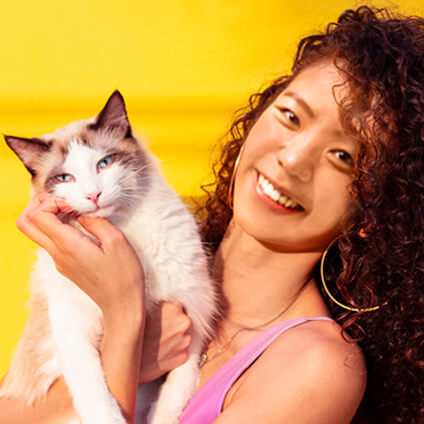
With over five years of specialized experience as an animal writer, my expertise lies in cat nutrition, health, behavior, grooming, and training. I am dedicated to delivering helpful and informative content that caters to the well-being of our feline friends. My primary goal is to empower pet owners with knowledge and ensure our feline companions thrive in health and happiness. In my free time, I love volunteering at local cat rescue centers.
